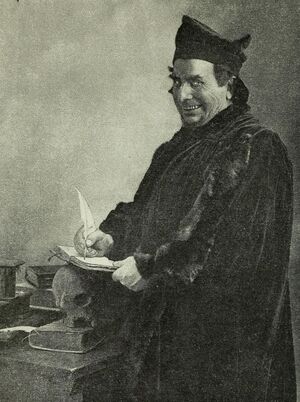Villain (nonfiction): Difference between revisions
Jump to navigation
Jump to search
No edit summary |
|||
| Line 11: | Line 11: | ||
== In the News == | == In the News == | ||
<gallery | <gallery> | ||
File:Dr._Syntax_stopped_by_highwaymen_Engraving.jpg|''Doctor Syntax and Highwaymen'', 1813 - Engraving by Thomas Rowlandson. "Doctor Syntax" – a popular literary character of the early nineteenth century – on horseback, stopped by three robbers armed with pistols. | File:Dr._Syntax_stopped_by_highwaymen_Engraving.jpg|''Doctor Syntax and Highwaymen'', 1813 - Engraving by Thomas Rowlandson. "Doctor Syntax" – a popular literary character of the early nineteenth century – on horseback, stopped by three robbers armed with pistols. | ||
</gallery> | </gallery> | ||
| Line 26: | Line 26: | ||
External links: | External links: | ||
* [https://en.wikipedia.org/wiki/Villain Villain] @ Wikipedia | * [https://en.wikipedia.org/wiki/Villain Villain] @ Wikipedia | ||
Latest revision as of 10:52, 14 January 2018
A villain (also known as the "antagonist," "baddie", "bad guy", "heavy" or "black hat") is an "evil" character in a story, whether a historical narrative or, especially, a work of fiction.
The villain usually is the antagonist (though can be the protagonist), the character who tends to have a negative effect on other characters.
A female villain is occasionally called a villainess (often to differentiate her from a male villain).
Random House Unabridged Dictionary defines villain as:
A cruelly malicious person who is involved in or devoted to wickedness or crime; scoundrel; or a character in a play, novel, or the like, who constitutes an important evil agency in the plot".
In the News
Fiction cross-reference
Nonfiction cross-reference
External links:
- Villain @ Wikipedia

